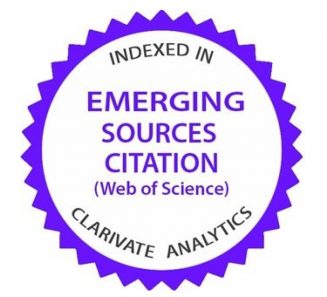|
|
Bulletin of the Chemists and Technologists of Bosnia and Herzegovina
Issue 57
Publication date: December 2021 |
|
Table of contents
Seeking the right balance between three teaching approaches: a quasi-experimental study in the context of learning about thermal phenomena Original Scientific Article
Kolenda, D., Vidak, A.
DOI: 10.35666/2232-7266.2021.57.01
UDK: 542-053.5:37.018.2
Abstract: In this study, we investigated which teaching approach may be optimal to facilitate learning about thermal phenomena in primary school. Concretely, we conducted a pretest-posttest quasi-experiment that included 45 eighth-grade students divided into three groups. In the first group (a non-interactive teacher-centered approach), the teacher gave an experiment-based lecture on converting thermal energy into mechanical work. In the second group (a teacher-centered interactive approach), the teacher gave the same experiments-based lecture, but interacted much more with the students and encouraged them to think about the demonstrations. Finally, in the third group, the student-centered interactive approach was applied. The results of the ANCOVA showed that the three teaching approaches were equally effective in developing students’ understanding of thermal phenomena. However, closer analyses showed that students who learned from the teacher-centered interactive approach significantly outperformed their peers when it came to understanding basic thermal concepts approach, students worked in small groups to conduct the same experiments and “discover” the same relationships that the teacher had introduced in the previous one.
Bulletin of the Chemists and Technologists of Bosnia and Herzegovina 57, 1-8.
Occurrence of the heavy metals and PCBs in Accumulation Lake Modrac Original Scientific Article
Marjanovic, A., Djedjibegovic, J., Omeragić, E., Sober, M.
Abstract: The accumulation Lake Modrac is a particularly important source of drinking water for inhabitants of the Tuzla region and few local settlements.The most significant point sources of organic contaminants in the accumulation Lake Modrac are waste water from households and industry. In this area, most of the settlements have neither sewage systems nor facilities for waste water treatment. Other potential point sources of pollutants are industrial plants. The most prominent are coal mines (Banovići and Đurđevik), metal and wood industry, plant for plastic production, and oil and oil derivatives warehouse.Few previously conducted surveys in the region showed the presence of the persistent organic pollutants and heavy metals in large extent. The objective of this study was to conduct a water quality survey targeting selected inorganic (Cd, Cr, Cu, Hg, Ni, Pb and As) and organic pollutants in the accumulation Lake Modrac in Bosnia and Herzegovina. The content of polychlorinated biphenyls (PCBs) determined with ELISA test, ranging from 3.23 to 6.19 µg/L (sum of 7PCBs).The most abundant metals (analyzed by graphite furnace AAS and mercury analyzer) at all five sampling locations were Pb (6.79-36.58 µg/L); Ni (5.81-10.43 µg/L) and Hg (1.08-6.10 µg/L).
Bulletin of the Chemists and Technologists of Bosnia and Herzegovina 56, 9-16.
Smoking effect on the cadmium and zinc concentration in smokers and nonsmokers Original Scientific Article
Pepić, E., Šečić, D., Lepara, O., Kapić-Pleho, A., Kurtagić-Pepić, E., Mušanović, J., Metović, A., Džubur, A., Naser, N., Panjeta, M., Alić-Džubur, A., Voljevica, A.
DOI: 10.35666/2232-7266.2021.57.03
UDK: 613.84 [546.48:546.17]
Abstract: Studies have shown that cigarette smoking affects the accumulation of some heavy metals in certain tissues and metabolism of essential elements. The aim of the study was to determine the differences in the concentrations of cadmium in the blood and urine and zinc in the urine of smokers and ex-smokers in relation to non-smokers, and to determine the possible influence of cadmium concentration on zinc excretion as an essential element. The study included 106 subjects. Subjects were regular smokers (n=51), ex-smokers (n=38) and non-smokers (n=17). Atomic absorption spectrophotometry (AAS) with an electrothermal atomizer was used to determine cadmium. Zinc was determined by AAS with a flame atomizer. There was a significant difference in the values of cadmium in the blood between the groups: smokers and non-smokers (p<0.001), smokers and ex-smokers (p <0.001), and between ex-smokers and non-smokers (p = 0.045). There is a significant positive and strong correlation in the level of zinc and cadmium in urine per gram of creatinine, and as the level of cadmium increases, the level of zinc also increases (rho=0.781; p=0.001). The data indicate that cigarette smoking has been shown to be a factor that can increase cadmium levels to an extent that will significantly increase zinc excretion, or its increased loss.
Bulletin of the Chemists and Technologists of Bosnia and Herzegovina 56, 17-26.



